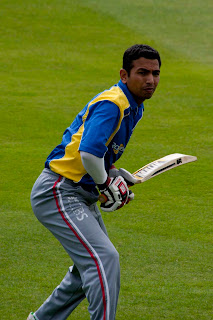I wanted to attempt to photograph some kind of sports event and came across a sign advertising a cricket match at our local club. Now I am not a cricket person at all but I thought that as the pace of cricket is pretty slow, it would be a good opportunity to set up a camera on the periphery of the pitch. Apart from the camera potentially being a target for a speeding cricket ball, I felt pretty safe being behind the lens.
I had asked my husband and brother-in-law along to the match, partly as back up as the thought of sitting through a cricket match did not appeal at all and also for someone to talk to between shots.
Some six hours later I nearly understood the rules of cricket. Actually, I lied, I still haven’t got a clue and no, I will not be joining the fan club but I did manage to get some shots of the match.
I tended to concentrate on the bowler and the batsman as I felt that they were more mobile than perhaps some of the other players. I had set the camera, a Canon 40D with a 300mm lens on a stand and carted it round the pitch, stopping periodically to take a series of shots.
I really needed a bigger lens for this project but my student grant won’t stretch that far at the moment so I made the most of the equipment that I had.
Perhaps it was because of the slow pace but I felt that there was not much going on in the game and that the photos were a bit samey. I could perhaps have focussed on some of the players standing around, but I wanted to capture action and concentrated on the more animated players.
I had previously taken some HDR images of the pitch and have included them. I love using HDR and like to take the colours and tone effects to the extreme in order to create a photograph reminiscent of a painting. I know that HDR is a brilliant tool, but for the moment, prefer to use it more creatively rather than to enhance ‘more realistic looking photos.
 |
| © Andrea Percival |


























